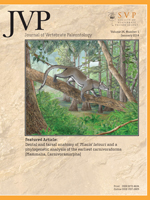The Greater Antilles was once home to a diverse array of endemic groups of caviomorph rodents. Many of these became extinct, together with endemic insectivores, sloths, and primates, in what is widely considered an archtypical example of Quaternary extinction on oceanic islands. When and how the ancestors of these land mammals arrived on these islands is debated. Here we report on the discovery, for the first time, of undoubted rodent incisors in Oligocene contexts in Puerto Rico. The enamel microstructure of the Puerto Rican fossils is consistent with caviomorph affinities, particularly with extinct Pleistocene species from Puerto Rico and Anguilla (Lesser Antilles). These fossils represent the oldest rodents now known from the West Indies, as well as the oldest record of caviomorphs north of the Equator. Their presence in the Greater Antilles by the early Oligocene suggests that caviomorph rodents must have begun to disperse throughout South America, and beyond, very soon after their initial radiation (currently pegged to middle or late Eocene). This, together with other lines of evidence, is consistent with the landspan hypothesis for the origin of the Greater Antillean land mammal fauna, although other mechanisms, including overwater transport, cannot be ruled out.
How to translate text using browser tools
1 January 2014
The Earliest Caribbean Rodents: Oligocene Caviomorphs from Puerto Rico
Jorge Vélez-Juarbe,
Thomas Martin,
Ross D. E. Macphee,
Diana Ortega-Ariza
ACCESS THE FULL ARTICLE





